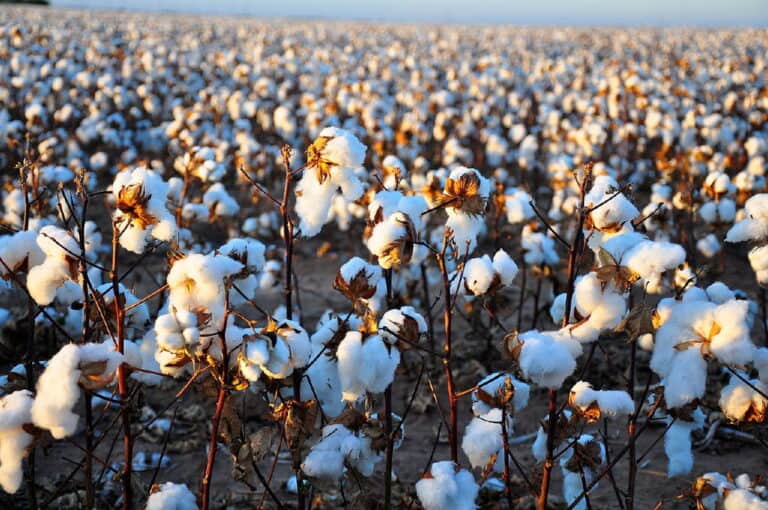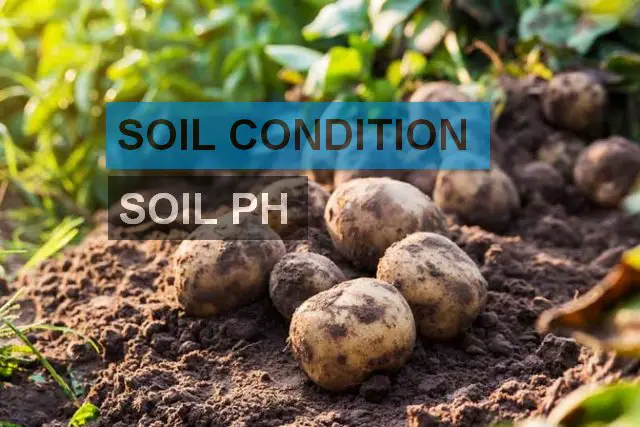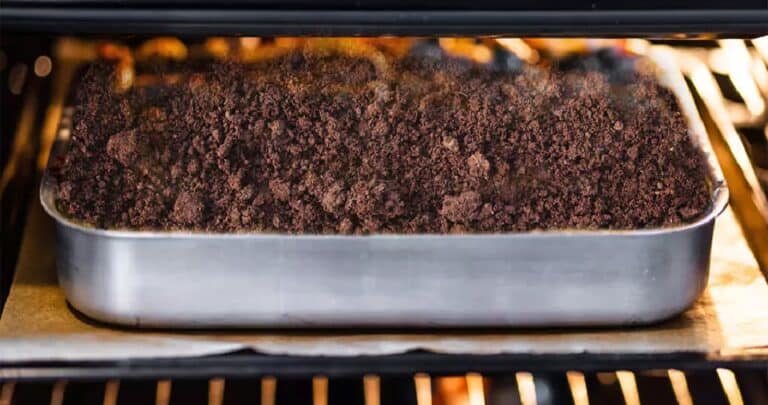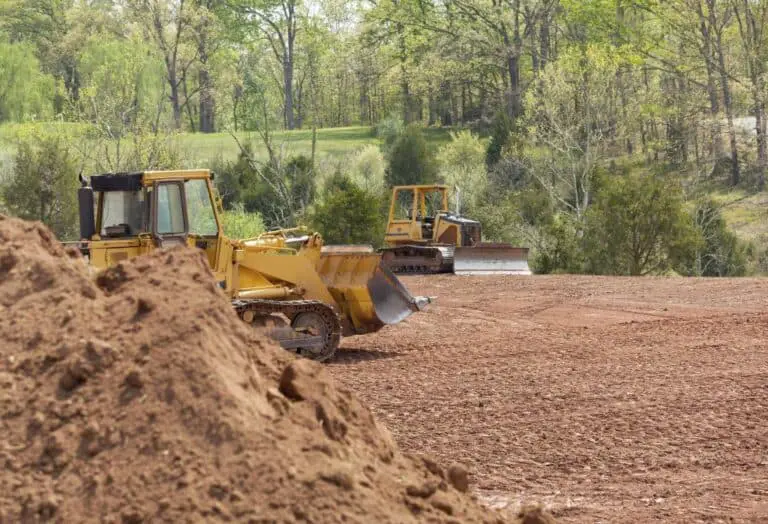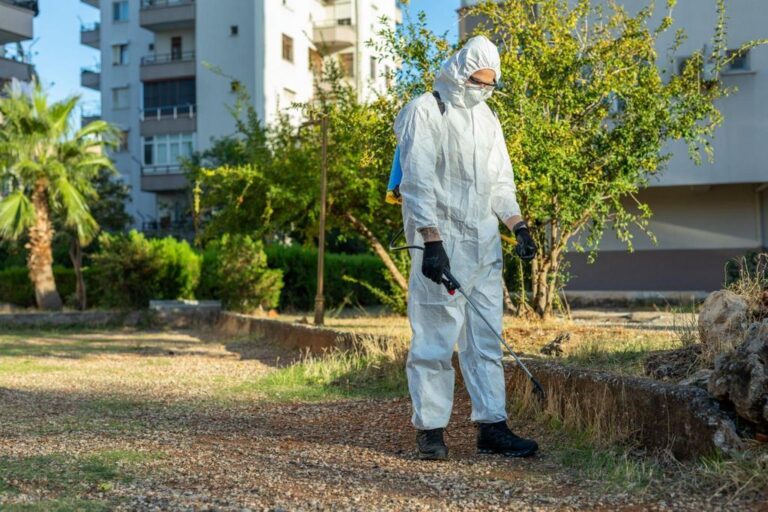Well-Rotted Manure: What It Is and How to Apply It
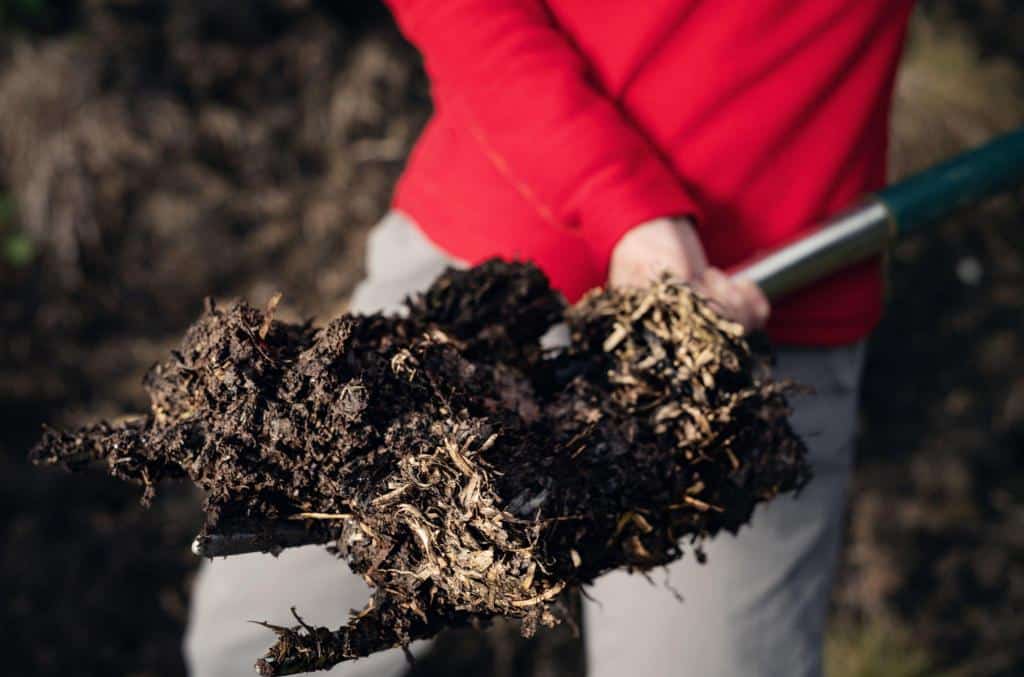
When it comes to nurturing a thriving garden or improving the fertility of your soil, organic fertilizers can be an invaluable asset. Among these naturally derived substances, one that stands out is well-rotted manure. But what exactly is well-rotted manure? It’s not just about piling up animal waste; it’s much more than that.
Well-rotted manure refers to decomposed animal waste. It has gone through a process of fermentation and breakdown over time. This decomposition creates a nutrient-rich substance that can work wonders for your plants and crops.
This natural fertilizer has a dark brown color and an earthy smell. It consists of organic matter like nitrogen, phosphorus, and potassium. It also contains the beneficial microorganisms necessary for a flourishing garden.
So if you’re eager to learn how well-rotted manure can enhance your gardening endeavors or make strides towards sustainable agriculture, you’ve come to the right place!
This article will delve into everything you need to know about this remarkable organic fertilizer. We’ll cover its composition, benefits for soil health and plant growth, and most importantly, how to properly apply it in your gardens or fields. Let’s dig deep into the world of well-rotted manure together!
Composition of Well-Rotted Manure
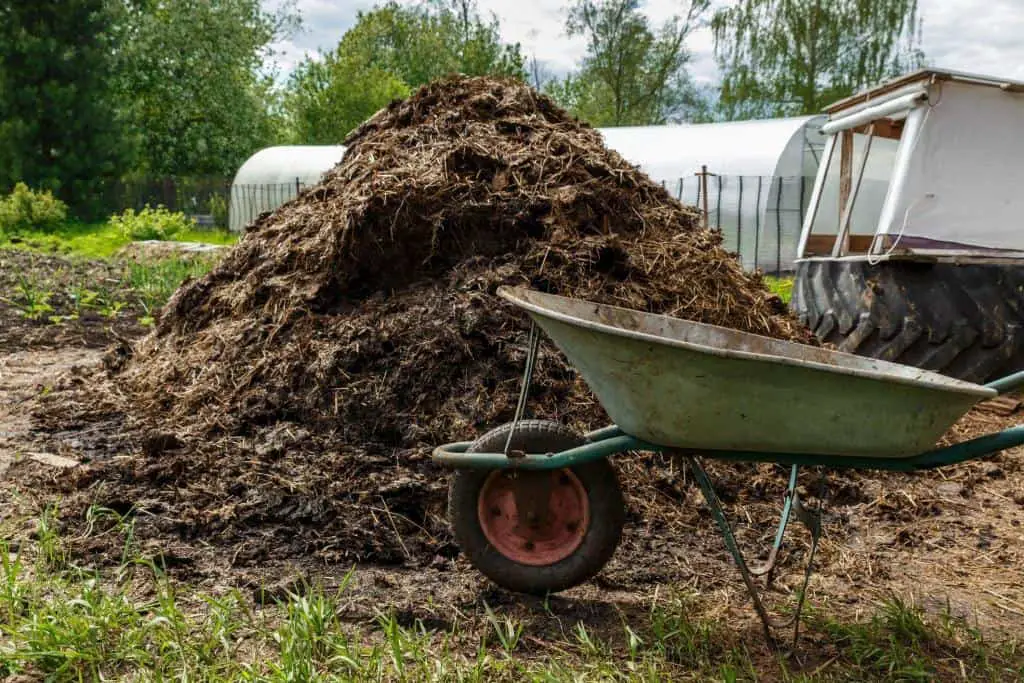
Well-rotted manure is an organic fertilizer derived from decomposed animal waste. It undergoes a natural aging process. It typically consists of a mixture of animal feces, bedding materials, and other organic matter such as straw or hay.
During the decomposition process, beneficial microorganisms break down these components. They create a nutrient-rich substance that greatly enhances soil health.
Well-rotted manure is composed of various nutrients that are essential for plant growth. The composition of well-rotted manure includes:
- Nitrogen (N): This nutrient is essential for plant growth and helps in the formation of amino acids, which are the building blocks of proteins. Nitrogen is also a component of chlorophyll, the pigment responsible for the green color of plants.
- Phosphorus (P): Phosphorus is another crucial nutrient for plant growth, as it is a component of nucleic acids, phospholipids, and ATP, which is the primary energy carrier in living organisms.
- Potassium (K): Potassium is essential for plant growth and helps in the regulation of osmosis, which is the movement of water in and out of plant cells. It is also a component of chlorophyll.
Manure also contains secondary nutrients, such as calcium, magnesium, and sodium. It also has micronutrients like iron, zinc, and copper.
The exact composition of well-rotted manure can vary. This depends on factors such as the type of animal, the bedding materials used, and the storage conditions. For example, a tonne of well-rotted horse manure typically contains 5 kg (11 lbs) of nitrogen, 3.6 kg (8 lbs) of potassium, and 0.9 kg (2 lbs) of phosphorus.
How Does Well-Rotted Manure Differ From Fresh Manure?
Well-rotted manure differs from fresh manure in terms of its maturity and suitability for use in gardening. Well-rotted manure is animal waste mixed with bedding. It has been composted or left to rot for at least six months, preferably a year. This allows it to break down and become more stable.
Fresh manure is not suitable for gardening. It can be too potent and may contain harmful bacteria. This could potentially damage plants and cause health risks. As mentioned above, it takes 6 months to 1 year for fresh manure to rot before use.
The process of rotting or composting manure allows it to mellow. It becomes a valuable soil amendment, providing nutrients and improving soil structure. Well-rotted manure is the preferred choice for gardeners, as it is less likely to burn plant roots and is safer to handle.
The composting process also helps to eliminate weed seeds and pathogens. This makes it a more reliable and beneficial soil conditioner for gardens and vegetable patches.
The term “well-rotted” typically refers to manure that has been piled up in a heap and allowed to decompose until it no longer smells. The specific time required for the manure to become well-rotted may vary depending on the type of manure, such as chicken, cow, or bat manure, but a general rule of thumb is to apply a 2-3 inch layer of well-rotted or aged manure in the garden.
| Read also: What Is the Difference Between Fresh and Composed Manure? |
Well-Rotted Manure Benefits to Soil Structure and Fertility
The benefits of well-rotted manure extend far beyond its nutrient content. When applied to soil, this organic fertilizer acts as a soil conditioner. It improves overall soil structure and fertility. The rich humus-like material in well-rotted manure helps to increase the soil’s water-holding capacity while also improving its ability to drain excess moisture, thus creating optimal conditions for plant growth.
Furthermore, well-rotted manure promotes the formation of aggregates within the soil. These aggregates provide pore spaces for air circulation and root penetration while preventing compaction. As a result, plants can access nutrients more easily and develop strong root systems.
Well-rotted manure enhances soil structure. It serves as a slow-release fertilizer due to its high organic matter content. This implies that instead of leaching out quickly like some synthetic fertilizers do, it releases nutrients gradually over time as plants require them.
Using organic fertilizers like well-rotted manure reduces reliance on synthetic chemical fertilizers. This promotes environmental sustainability. Chemical-based alternatives pose potential harm to ecosystems. They have also been found to deplete beneficial bacteria and fungi necessary for healthy soil functioning.
Creating Well-Rotted Manure
Composting is the key process for transforming raw animal waste into well-rotted manure, a nutrient-rich organic fertilizer. To begin, gather a sufficient amount of animal dung from herbivorous livestock such as cows, horses, or chickens. It’s important to note that waste from carnivorous animals should be avoided. This is because it has a higher nitrogen content and can transmit pathogens.
The first step in the composting process is building a dedicated composting area or bin. This can be as simple as constructing a pile using wooden pallets or repurposing an old container, such as a large barrel. The key is to provide enough space for air circulation and efficient decomposition.
Next, layer the collected dung with alternate layers of carbon-rich materials like straw, leaves, sawdust, or wood chips. This ensures proper balancing of the carbon-to-nitrogen ratio. It also prevents odors associated with excessive nitrogen release during decomposition.
To accelerate the breakdown process, maintain adequate moisture levels within the compost pile. Periodically water it, especially during dry spells. Regular turning or flipping of the material every two weeks helps mix up oxygen levels that are vital for promoting microbial activity responsible for breaking down organic matter effectively.
Over time, typically 6 months to 1 year, your compost will undergo transformation through various stages of degrading into mature manure ready for application on plant beds and vegetable plots in your garden.
During this period, you may notice temperature changes within the pile. This indicates successful microbial activity. It contributes to the decomposition and breakdown of complex compounds in fresh dung into easily absorbed nutrients by plants.
| Also see: Fastest Way to Compost Chicken Manure? |
How to Apply Well-Rotted Manure
There are several effective ways to apply well-rotted manure to gardens or agricultural fields. The method you choose depends on your specific needs and preferences. Here are some popular application techniques:
1. Top Dressing
One straightforward method is to spread a generous layer of well-rotted manure directly on top of the soil. This technique is ideal for established plants that require a nutrient boost throughout the growing season. Simply scatter and spread the manure around the base of each plant. Ensure it doesn’t come into contact with leaves or stems to avoid potential burns.
2. Incorporation during Soil Preparation
For new planting areas or vegetable beds, consider adding well-rotted manure to the soil before sowing seeds or transplanting seedlings. You can accomplish this by digging trenches or furrows. Fill them with a layer of manure. Then, backfill them with the previously existing soil.
3. Creating Manure Tea
Another option is to steep well-rotted manure in water to create a nutrient-rich liquid fertilizer known as manure tea. To do this, place a bag (such as an old pillowcase) filled with well-rotted manure into a bucket of water and let it soak for several days up to one week until the water becomes dark brown in color and emits an earthy smell. Once ready, strain out any solids from the tea and use it as a foliar spray or watering solution for your plants.
When to Apply Well-Rotted Manure
The ideal time to apply well-rotted manure is in the fall, after harvesting crops. By adding a layer of manure during this time, it gets sufficient time over the winter to break down further. Then, it can be incorporated into the soil before spring planting begins. However, if you missed the window for fall application, you can still add well-rotted manure in early spring.
To apply well-rotted manure accurately, follow these steps:
1. Clear any crop residue or weeds from the area.
2. Spread an even layer of 1-2 inches (2.5–5 cm) thick across your garden bed.
3. Use a garden fork or rake to gently work the manure into the top few inches of soil.
4. Water thoroughly to ensure proper distribution and activation of nutrients.
Avoid applying excessive amounts of well-rotted manure, as it can lead to nutrient imbalances or leaching issues. It’s always best to conduct a soil test beforehand so that you know how much organic matter is needed for optimal growth without overdoing it.
Dosage Recommendations Based on Plant Type
It’s important to keep in mind that different types of plants have varying nutrient requirements when determining how much well-rotted manure should be applied.
For heavy feeders like tomatoes, peppers, corn, or brassicas (cabbage family), aim for approximately 2 inches (5 cm) of well-rotted manure incorporated into the top few inches (10 cm) of soil prior to planting.
Medium feeders such as beans, cucumbers, squash, or lettuce can benefit from a layer of 1-2 inches (2.5–5 cm) spread evenly on the soil surface or mixed into the top inch (2.5 cm) of soil before sowing seeds.
Light feeders like carrots, onions, herbs, or native plants typically do not require large amounts of fertility and may only need a thin layer (0.5–1 inch/1.3–2.5 cm) sprinkled over the planting area at most.
Always start with smaller quantities initially and observe your plants’ responses before adjusting the dosage in subsequent seasons to avoid overfertilizing.
Precautions
While well-rotted manure can be an excellent addition to your garden, it is important to exercise caution when using fresh or improperly decomposed manure. Here are a few potential issues to be aware of:
1. Unpleasant Odor: Fresh manure can emit a strong and unpleasant odor due to the presence of nitrogen compounds. This can be off-putting for some people and may even cause complaints from neighbors. To avoid this, make sure to use well-rotted manure that has had sufficient time to decompose.
2. Seedling Burn: If you apply fresh manure directly to young seedlings or delicate plants, it can burn their roots and stunt their growth. The high levels of soluble salts in fresh manure can cause dehydration and damage tender plant tissues. It is advisable to compost the manure properly before application or use well-rotted, aged manure closer to mature plants.
3. Contamination Risks: Fresh animal waste may contain harmful pathogens such as E. coli or Salmonella that could potentially contaminate crops if not fully composted beforehand. These pathogens pose health risks if consumed through unwashed fruits and vegetables grown in contaminated soil treated with raw or improperly processed feces.
To ensure safe usage of animal-based fertilizers like manure, always prioritize using well-decomposed forms that have undergone proper composting procedures for a consistent period of time, typically six months at minimum.
Conclusion
In conclusion, incorporating well-rotted manure into your gardening practices provides numerous benefits for both plants and soils. It promotes sustainability and reduces reliance on chemical fertilizers.
By understanding its composition and the proper application methods outlined above, you can effectively harness all its advantages in enriching your garden soil and supporting healthy plant growth.
Well-rotted manure stands as a testament to the wonders of natural soil enrichment. By understanding its benefits and following simple application guidelines, you can transform your garden into a thriving haven for plant life. Embrace the power of well-rotted manure and watch your garden bloom with vitality and abundance.
Use well-rotted manure from reliable sources to avoid potential contamination and ensure optimal nutrient content. Fresh manure can be too strong for plants and may contain harmful pathogens.
Always opt for well-rotted alternatives. Combine well-rotted manure application with other organic gardening practices, such as mulching, to maximize the benefits for your plants.

